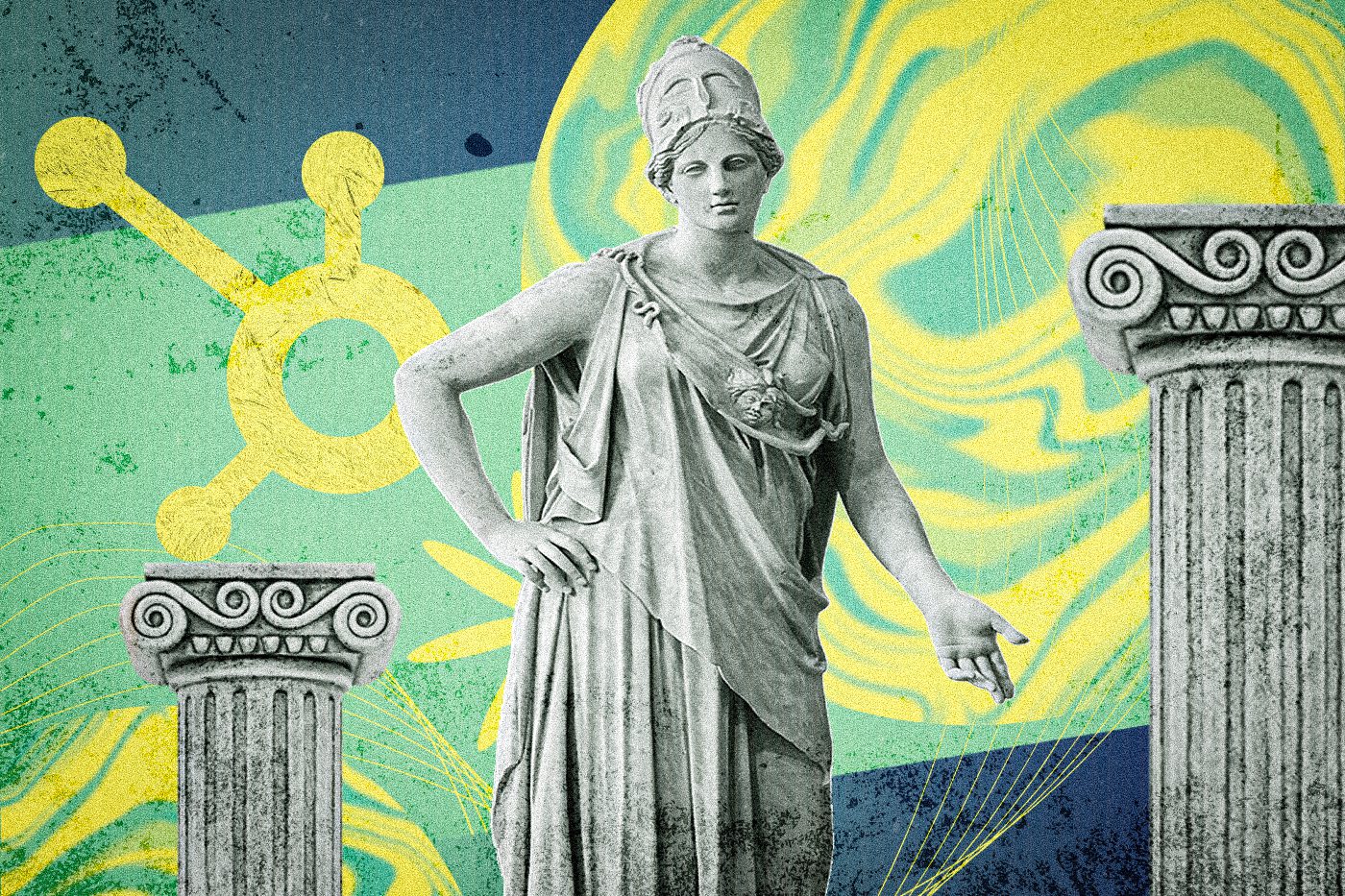HubSpot for Museums: The Marketer’s Guide
- Is HubSpot the right marketing tool for my museum?
- 8 ways to use HubSpot for museums.
- 1. Create event-specific landing pages.
- 2. Plan, schedule, and publish your museum's social media campaigns.
- 3. Automate museum marketing tasks.
- 4. Grow your museum's audience and convert them into visitors, members, and donors.
- 5. Integrate with other tools to manage donations and ticketing.
- 6. Track marketing performance across all campaigns and channels in one place.
- 7. Create, manage, and optimize paid social media and search campaigns.
- 8. Send targeted, personalized emails and newsletters.
- Learn more with HubSpot for Museums FAQs.
- How much does HubSpot cost for museums?
- How can I use HubSpot to manage my museum's customer relationship management (CRM) data?
- How can I use HubSpot to improve my museum website SEO?
- How can I get help with using HubSpot for my museum?
- Work with an agency that knows HubSpot and museum marketing.
Between curating exhibitions, planning events, attracting new visitors, hosting fundraisers, running donation drives, managing a website, and coordinating social media, museum administrators have their work cut out for them. Which is why any tool that promises to make it easier for museum professionals to plan and coordinate these activities is worth considering.
Enter HubSpot. As a CRM designed to connect museum marketing, sales, customer service, and content management all on a single platform, HubSpot has the power to greatly enhance and streamline your organization’s marketing efforts. That’s why we’ve put together this guide to getting started using HubSpot at your museum.

Is HubSpot the right marketing tool for my museum?
As HubSpot partners, we here at Big Sea are big boosters when it comes to using the platform to magnify your team’s marketing efforts. HubSpot offers a suite of tools for fundraising, digital marketing, email automation, and donor relations management that any museum would find useful. On top of that, HubSpot for Nonprofits offers a 40% discount for 501(c)(3)s — so adopting these tools may be more affordable than you thought.
How can HubSpot help museums grow their visitors, donors, and members?
We all hate spam, and no one likes to think they’re susceptible to advertising. But with the right targeting and segmentation, you can reach potential donors and visitors at just the right time to encourage them to take action.
That’s where HubSpot comes in. HubSpot makes it easier to segment, manage, and track your contacts. With features like lead scoring, you can compile information on which visitors are primed to become regular donors, then create an automated email workflow tailored to those leads to encourage future contributions. Then you can gather further analytics from those emails to determine what messaging works and what doesn’t so you can tailor it over time and run trials with A/B testing.
This sort of focused, tested, tailored messaging gets results. Just look at some of our case studies.
8 ways to use HubSpot for museums.
The beauty of HubSpot is that you can access a wide suite of tools for sales and marketing – tools that integrate together so the right hand knows what the left hand is doing when it comes to running your organization. Here are just eight of the ways you can use HubSpot for your museum.
1. Create event-specific landing pages.
With HubSpot’s landing page template, you can create unique pages to promote particular events at your museum. This lets you focus the entire page on a single conversion goal: selling tickets. With clear, direct copy, compelling images, and messaging focused on that event’s target audience, you can boost awareness and attendance for your next event — and gather information about what works and what doesn’t the next time you have something to promote.
Check out our step by step guide to launching a landing page.
2. Plan, schedule, and publish your museum’s social media campaigns.
Instagram, TikTok, LinkedIn, Threads, the platform formerly known as Twitter: each day there’s a new social media site to contend with. With HubSpot, you can connect multiple accounts and platforms to Marketing Hub’s social media management tool, allowing you to plan out and schedule your posts ahead of time. This lets you manage all your accounts from a single dashboard and compare metrics from each account to determine where and when you’re getting the most engagement.
3. Automate museum marketing tasks.
Automated workflows make it possible for a relatively small marketing team to accomplish some very sophisticated work on a large scale. By collecting a few basic data points about your guests and donors — their interests, what exhibit drew them to your institution, whether they’ve made donations to your museum in the past, etc. — you can set up automated workflows that segment them into different groups then send them promotions that are relevant to their particular interests or inclinations.
For instance, one-time donors can receive automated periodic reminders to donate again — and these reminders can be spaced far enough apart to make sure that they don’t seem rote or intrusive. Another example: if you know someone came to your museum to see an exhibition about classic automobiles, you could place them in a workflow that receives occasional updates about transportation technology in general.
4. Grow your museum’s audience and convert them into visitors, members, and donors.
Since HubSpot enables you to seamlessly integrate your sales, marketing, and customer relations all on a single platform, it’s easier for you to share information across departments and figure out how to turn visitors into donors or members. Once you know that someone has visited more than once, you probably have a good candidate to solicit for donations in the future.
5. Integrate with other tools to manage donations and ticketing.
One of the benefits of using HubSpot is the ability to integrate other tools, including fundraising and event management software. Some of the most popular integrations for 501(c)(3)s include:
Working with a museum marketing agency that understands HubSpot in and out will help you determine which integrations will work best for your organization without overlapping or duplicating services you’re already paying for.
6. Track marketing performance across all campaigns and channels in one place.
HubSpot’s user-friendly analytics interface lets you access analytics for each of your campaigns and social media channels all in the same spot. Social media, email marketing, sales forecasting, and a number of other HubSpot features all have built-in analytics components that let you visualize your data and mine it for actionable insights.
It’s hard to understand the value of gathering all this information together in the same place until you see it: not only does it save you the work of compiling that data from several different sources yourself, it offers you the chance to notice patterns and insights you might have missed otherwise.
7. Create, manage, and optimize paid social media and search campaigns.
Paid search and social media campaigns are a crucial part of any organization’s digital marketing efforts. But the extra money that goes into paid search leaves many organizations hesitant to do the extra work that’s necessary to run experiments and optimize their campaigns over time. Fortunately, HubSpot has tools that not only allow you to create and manage your paid campaigns — they also monitor performance and provide suggestions for optimization tailored to the particular platforms you’re using.
8. Send targeted, personalized emails and newsletters.
No one likes the feeling that they’re being tracked online. But they do like receiving personalized news and offers that actually match their interests. As we mentioned above, HubSpot’s automated workflows and CRM segmentation let you target the right people at the right time with messaging that speaks to their interests and concerns. The more you’re able to gather information about what draws people to your institution, the more accurately and effectively you can connect with them through well-timed email offers and newsletters.
Learn more with HubSpot for Museums FAQs.
Here are answers to some more frequently asked questions about HubSpot and the opportunities it offers for museums.
How much does HubSpot cost for museums?
HubSpot pricing varies depending on the tools you use, the number of users at your organization, and the scale of your operation (for instance, the number of marketing contacts in your network).
For example, the professional level CRM suite begins at $1,600/month. At the enterprise level it’s $5,000/month. However, eligible 501(c)(3)s using HubSpot for Nonprofits can get 40% off the regular cost.
How can I use HubSpot to manage my museum’s customer relationship management (CRM) data?
If there’s one thread that connects all the benefits of HubSpot we’ve been discussing in this blog, it’s the value of gathering information about donors and visitors and making that information transparent and accessible for different teams within your organization. With HubSpot’s CRM you can gather first-party data about how people interact with your organization, use that data to create personalized messaging and workflows for individual patrons, then gather actionable analytics about your efforts across multiple platforms together into single integrated, user-friendly dashboards.
How can I use HubSpot to improve my museum website SEO?
HubSpot offers SEO tools that can make keyword recommendations for your museum website and suggestions about when and how to update pages to optimize them for search. It also offers guidance about how to use content strategy to organize your pages around topic clusters to improve your search authority on Google.
How can I get help with using HubSpot for my museum?
HubSpot’s a powerful tool, but it can also be a little overwhelming if you’ve never used it before. There are a lot of features to choose from and integrations to pick, and it’s easy to end up paying for more than you need or duplicating services you already get elsewhere. At Big Sea, we regularly help organizations get started with HubSpot: we can offer advice about how to pick the right features for your museum and walk you through the initial set up so your marketing team has all the tools they need going forward.
Work with an agency that knows HubSpot and museum marketing.
We love working with people who are dedicated to a cause and passionate about what they do. That’s why we specialize in partnering with museums and nonprofits to grow their audiences, amplify their messaging, and drive new donors to their websites. Schedule a call to find out what we can do for your organization.

